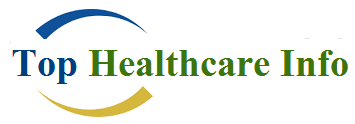Olive oil has long been a key component of the Mediterranean diet, celebrated for its heart-healthy benefits. In recent years, awareness of olive oil’s benefits has grown in India, particularly as lifestyle-related diseases such as diabetes, hypertension, and cardiovascular issues have become increasingly prevalent. While Indian households traditionally rely on sunflower, mustard, or groundnut oil, investing in high-quality olive oil can have major long-term health benefits.
The Nutritional Edge of Olive Oil
Extra virgin olive oil (EVOO), which is the least processed form, is rich in monounsaturated fatty acids (MUFAs), particularly oleic acid. MUFAs are known to reduce “bad” LDL cholesterol levels while maintaining or even increasing “good” HDL cholesterol. This effect contributes directly to a lower risk of heart disease, which is particularly relevant .
Olive oil is also abundant in antioxidants, especially polyphenols such as hydroxytyrosol and oleocanthal. These compounds combat oxidative stress and inflammation, which are underlying factors in many chronic diseases, including type 2 diabetes, cancer, and neurodegenerative conditions. Regular consumption of EVOO has been linked to improved blood sugar regulation, a significant benefit for India’s large diabetic population.
Why Quality Matters
Not all olive oils are the same. Blended varieties often lose many of the beneficial compounds found in extra-virgin olive oil due to high-temperature processing. Low-cost options in the market may also be diluted with cheaper vegetable oils, further reducing their health benefits. Investing a little more in certified EVOO ensures higher polyphenol content, authentic origin, and minimal processing. In India, several brands offer imported EVOO with quality certifications, but consumers should specifically look for labels that mention “cold-pressed” and “extra virgin” to maximise the benefits.
Practical Usage in Indian Cooking
One common concern among Indian households is whether olive oil can be used for traditional cooking styles such as sautéing, frying, and preparing curries. While extra-virgin olive oil has a moderate smoke point (around 190-210°C), it is best suited for low- to medium-heat cooking, salad dressings, drizzling over cooked dishes, and tempering dals or vegetables after cooking. For higher-heat applications such as deep-frying or stir-frying, extra-light olive oil, a refined version with the same core health benefits but a higher smoke point, can be a more practical choice.
Long-Term Health Savings
Spending more on quality olive oil is an investment in preventive health. A daily intake of 1-2 tablespoons of EVOO, integrated into a balanced diet, can reduce the risk of heart disease, lower inflammation, improve digestion, and support healthy ageing. For Indian families, where lifestyle diseases are on the rise, switching even partially to olive oil can contribute to fewer medical expenses and a better quality of life in the long run. When compared to future medical costs, the price of olive oil becomes a small but valuable investment in long-term wellness.
Take Away
While olive oil may appear expensive compared to common cooking oils, its health benefits, particularly for heart health, blood sugar regulation, and inflammation reduction, make it a worthwhile investment. Choosing extra-virgin, cold-pressed varieties ensures maximum effectiveness. In a country facing rising rates of chronic diseases, incorporating olive oil into daily cooking is not just a dietary preference but a step toward long-term wellness.

